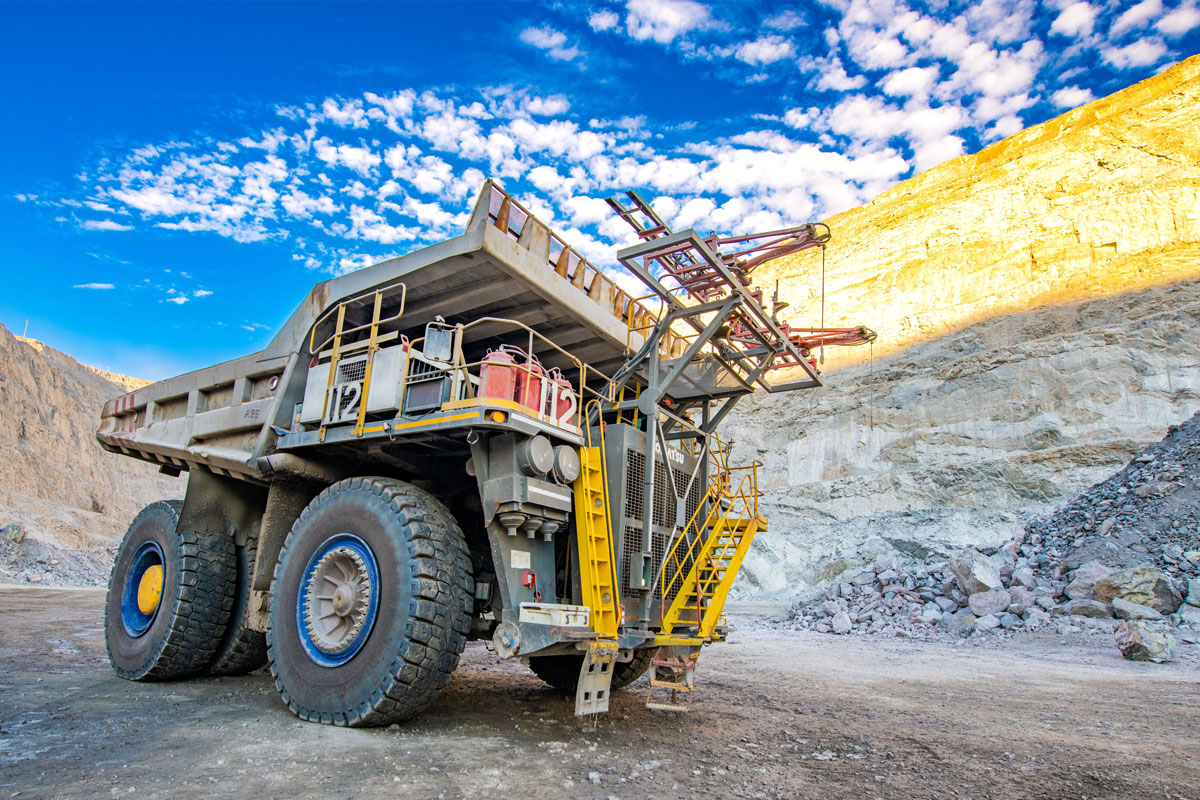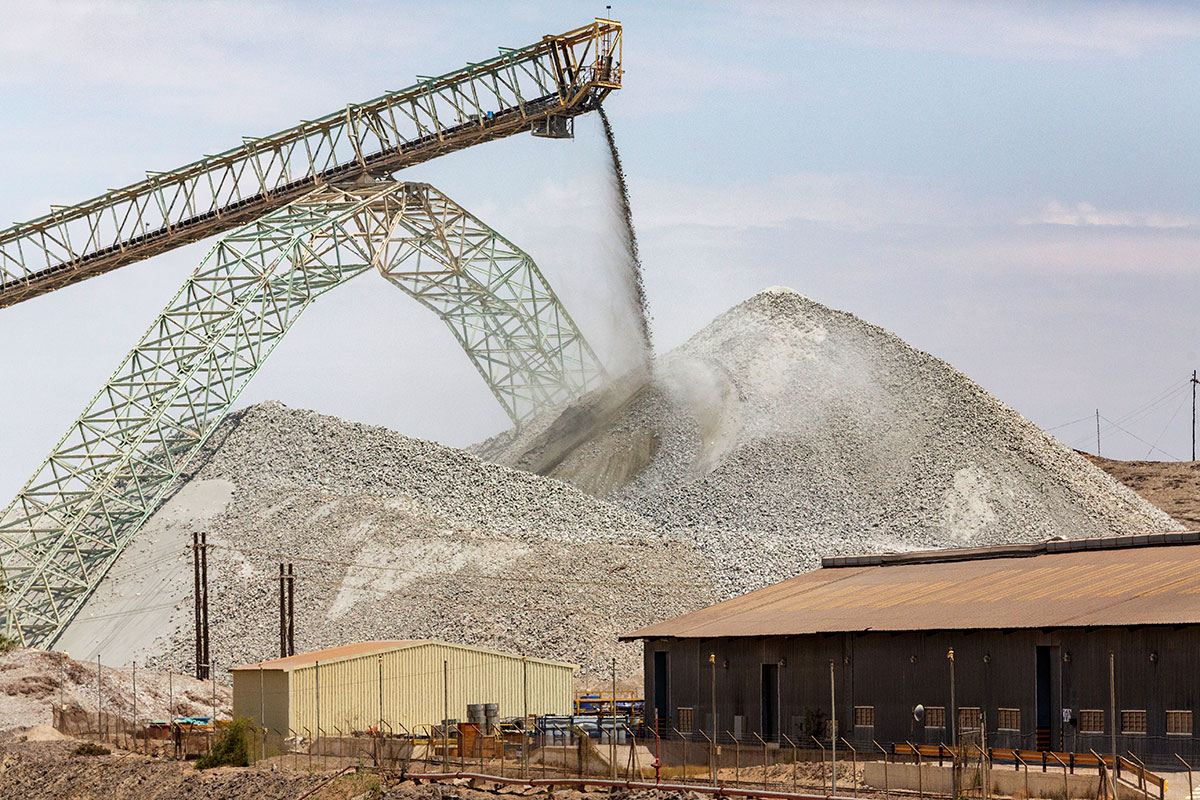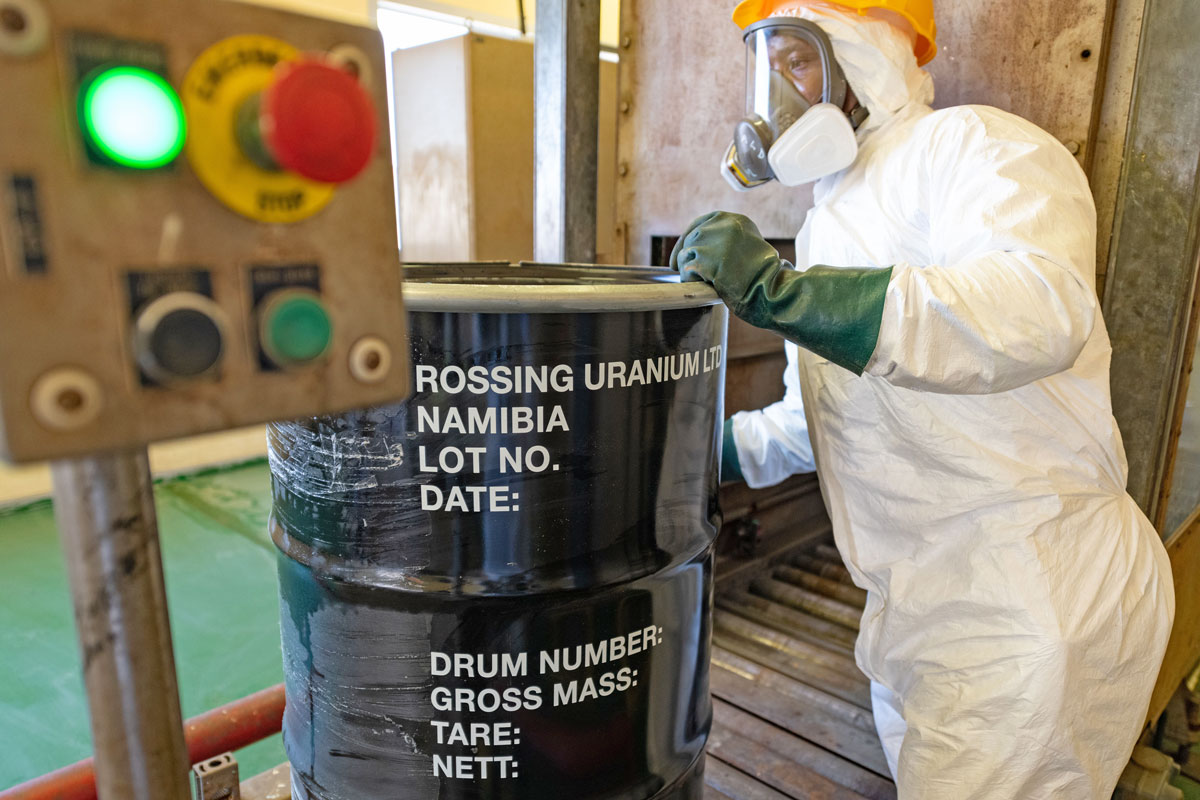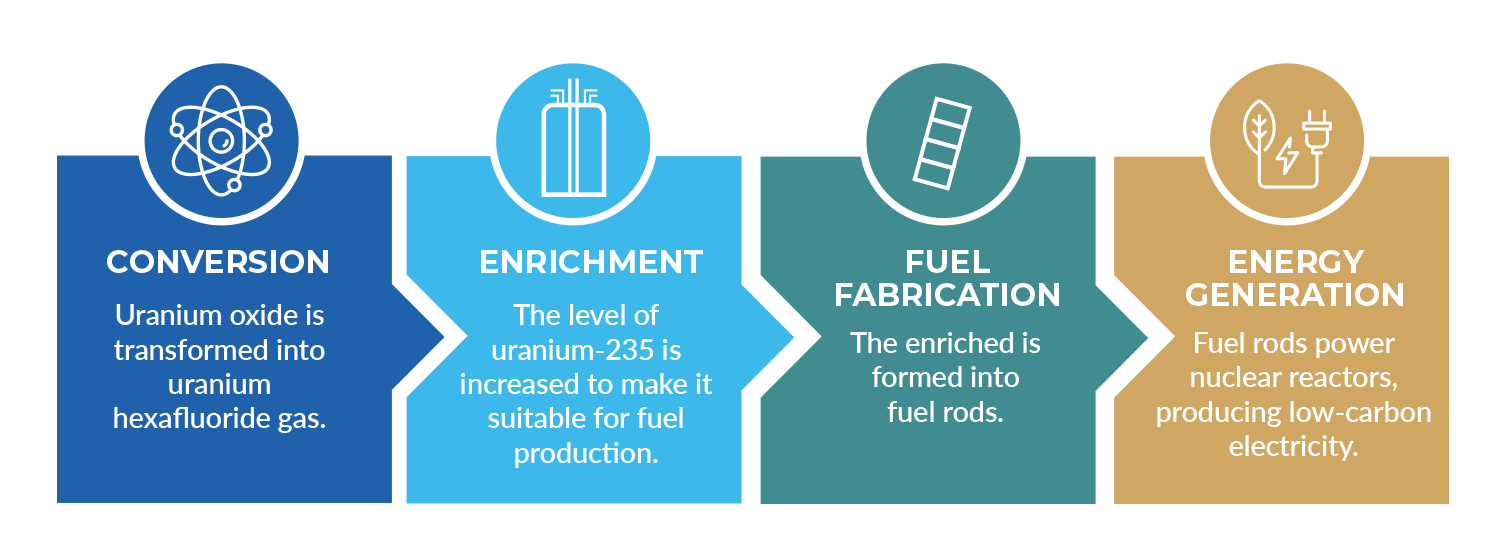OPERATIONS » OUR PROCESSES
Our main activities: Mining and processing
We follow a rigorous mining process, ensuring efficiency and sustainability at every stage. Our operations include:
- Mining operations – Advanced open-pit techniques that maximise resource efficiency.
- Processing – Extracting uranium safely and efficiently.
- Marketing – Supplying uranium to global energy markets.
- Nuclear fuel cycle – Supporting clean energy production worldwide.
1: Mining
Extracting uranium-bearing rock from our open-pit mine in the Namib Desert using dvanced open-pit techniques that maximise resource efficiency.
2: Processing
Refining the ore into uranium oxide (U₃O₈), also known as yellowcake, which is exported to nuclear power utilities worldwide.
3: Marketing
Supplying uranium to the global energy markets to meet the demand for clean energy solutions.
Mining process
Rössing applies an open-cast uranium operation (also known as open-pit uranium mining) to extract uranium-bearing rock from the surface of the earth, a method that ensures safe and efficient extraction. Drilling and controlled blasting break the rock, and the ore typically hauled to the crushing facility with heavy machinery where they are crushed into smaller pieces.
Safety and environmental responsibility are our priorities, and we follow strict regulations to minimise our impact.
We follow a structured sequence to ensure efficiency and safety:
Processing
After extraction, the uranium ore is processed to separate the uranium from the surrounding rock through chemical method like acid leaching, where acid is used to dissolve the uranium. The uranium is separated, purified, and transformed into uranium oxide. This final product is packaged and prepared for export to nuclear energy markets.
Waste Disposal:
- The mining operation generates a significant amount of waste rock, known as tailings, which must be carefully managed.
- Tailings are typically stored in specially designed tailings ponds to prevent leakage of radioactive materials and to minimize environmental impacts. Strict regulations, combined with our internal policies govern the disposal of radioactive waste to prevent contamination of nearby water sources.
Marketing
As the world moves toward clean energy, uranium plays an essential role. Rössing meets this growing demand by supplying nuclear power plants worldwide.
Once processed, uranium oxide is further enriched and converted into nuclear fuel, generating carbon-free electricity. Beyond mining, we contribute to a cleaner, more sustainable future while creating economic opportunities for Namibia and beyond.
Our uranium oxide is a key component in nuclear energy production, delivered to customers including China National Nuclear Corporation (CNNC). Each batch meets strict international quality and safety standards. We work closely with customers to ensure a reliable and consistent supply, supporting global clean energy initiatives.
Through strategic marketing and strong partnerships, we ensure our uranium reaches the right markets, contributing to a sustainable energy future.
The Nuclear fuel cycle
Uranium from Rössing goes through several steps before being used in nuclear power plants. Our role in this cycle is crucial, as nuclear energy provides stable, low-emission power for millions worldwide.





